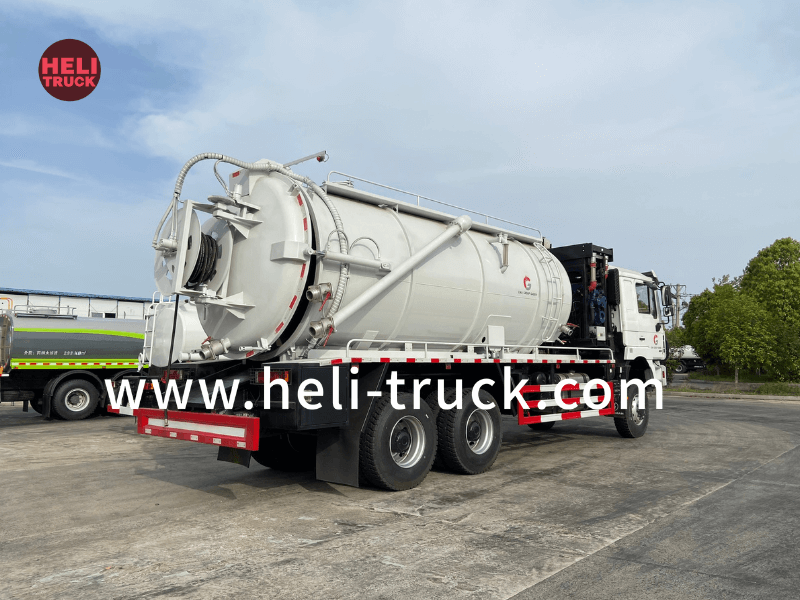Introduction
Water tank trucks play a crucial role in various industries such as construction, agriculture, and municipal services. These specialized vehicles are designed to transport and deliver large quantities of water to remote or inaccessible locations. Proper storage and maintenance of water tank trucks are essential to ensure their efficient operation and longevity. In this comprehensive guide, we will explore the best practices for water tank truck storage, including tips on maintenance, safety precautions, and maximizing efficiency.
Section 1: Understanding Water Tank Trucks
Before delving into storage practices, it is important to understand the basic components and functionalities of water tank trucks. These vehicles typically consist of a tank, pump, and associated plumbing systems. The tank is the primary storage vessel that holds the water, while the pump is responsible for transferring the water to the desired location. The plumbing systems include hoses, valves, and fittings that facilitate the flow of water within the truck.
Water tank trucks come in various sizes and configurations, ranging from compact units mounted on pickup trucks to large commercial vehicles with capacities exceeding 10,000 gallons. The choice of truck depends on the specific requirements of the application, such as the volume of water to be transported and the accessibility of the delivery site.
Section 2: Storage Requirements
Proper storage of water tank trucks is crucial to prevent damage, ensure safety, and maintain operational efficiency. Here are Vacuum truck sludge removal to consider:
1. Shelter: Ideally, water tank trucks should be stored in a covered facility such as a garage or warehouse to protect them from the elements. Exposure to sunlight, rain, and extreme temperatures can lead to premature deterioration of the tank and associated components.
2. Ventilation: Adequate ventilation is essential to prevent the buildup of fumes or gases within the tank. Proper airflow helps maintain the integrity of the water and prevents contamination.
3. Security: Water tank trucks should be stored in a secure location to prevent unauthorized access or tampering. Installing security measures such as locks and surveillance cameras can help deter theft or vandalism.
4. Accessibility: The storage facility should have sufficient space for maneuvering the water tank truck in and out. Clear pathways and designated parking spots ensure ease of access for maintenance and inspection purposes.
Section 3: Maintenance Practices
Regular maintenance is essential to keep water tank trucks in optimal condition and prevent costly repairs. Here are some key maintenance practices to follow:
1. Cleaning: The tank should be cleaned regularly to remove sediment, debris, and bacteria that can contaminate the water. Use appropriate cleaning solutions and disinfectants to maintain hygiene.
2. Inspections: Conduct routine inspections of the tank, pump, hoses, and fittings to check for leaks, corrosion, or other damage. Address any issues promptly to prevent further deterioration.
3. Lubrication: Proper lubrication of moving parts such as valves and pumps is crucial to prevent friction and wear. Use recommended lubricants and follow the manufacturer's guidelines.
4. Testing: Periodic testing of the water tank truck's pump and plumbing systems is necessary to ensure proper functionality. Test the flow rate, pressure, and overall performance to identify any potential issues.
Section 4: Safety Precautions
Safety should be a top priority when storing and operating water tank trucks. Here are some important safety precautions to observe:
1. Training: Ensure that operators are properly trained in the safe handling and operation of water tank trucks. Provide comprehensive training on emergency procedures, equipment usage, and risk assessment.
2. Personal Protective Equipment (PPE): Operators should wear appropriate PPE such as gloves, goggles, and protective clothing when handling water tank trucks. This helps prevent injuries and exposure to hazardous materials.
3. Hazard Identification: Conduct a thorough risk assessment of the storage facility to identify potential hazards such as chemical spills, fire risks, or structural weaknesses. Implement safety measures to mitigate these risks.
4. Emergency Response: Have an emergency response plan in place in case of accidents or incidents involving water tank trucks. This plan should include procedures for containment, evacuation, and communication with emergency services.
Section 5: Maximizing Efficiency

Efficiency is key to maximizing the performance and productivity of water tank trucks. Here are some tips to enhance efficiency:
1. Route Planning: Optimize delivery routes to minimize travel time and fuel consumption. Consider factors such as traffic conditions, road closures, and customer locations when planning routes.
2. Load Management: Properly distribute the weight of the water within the tank to prevent imbalance and ensure stability during transportation. Overloading the tank can strain the vehicle and lead to safety risks.
3. Monitoring Systems: Implement monitoring systems such as GPS tracking and telematics to track the location, speed, and usage of water tank trucks. This data can help identify inefficiencies and improve operational practices.
4. Regular Training: Provide ongoing training and professional development opportunities for operators to enhance their skills and knowledge. Well-trained staff are more likely to operate water tank trucks efficiently and safely.
Conclusion
Proper storage, maintenance, safety precautions, and efficiency strategies are essential for the effective operation of water tank trucks. By following the guidelines outlined in this comprehensive guide, operators can ensure that their water tank trucks remain in optimal condition, deliver water reliably, and contribute to the success of various industries. Remember that a well-maintained and properly stored water tank truck is a valuable asset that can provide years of service when cared for diligently.
